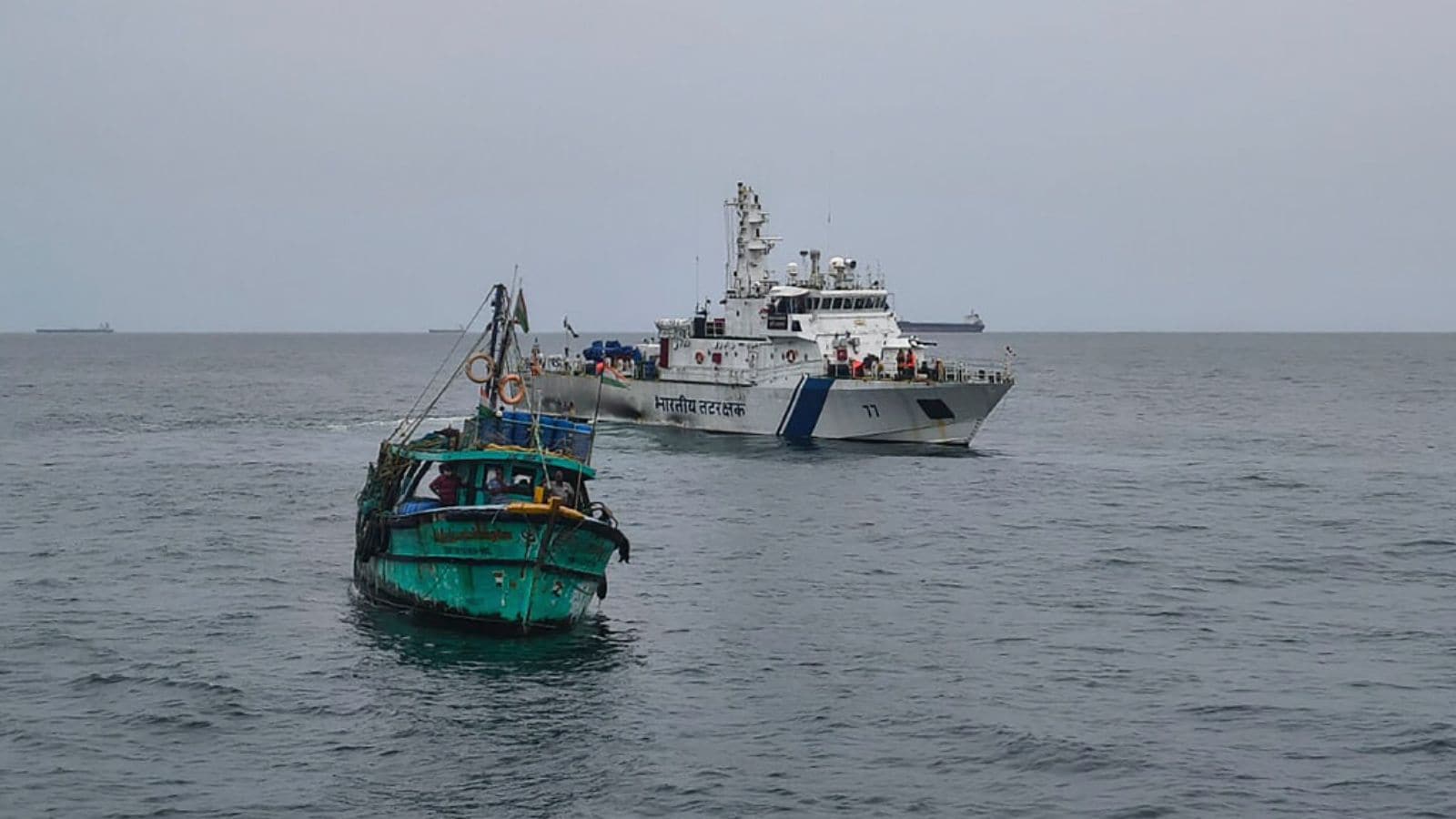A new cyclonic storm, named Montha, has developed over the west-central Bay of Bengal, marking the first such system of the year. Initially weak, the storm is expected to intensify rapidly as it tracks towards the Andhra Pradesh coast, where it could make landfall as a severe cyclonic storm with wind speeds touching 90-100 kmph, and possibly peaking at 110 kmph, according to early forecasts.
The Bay of Bengal, long known as one of the world’s most active breeding grounds for tropical cyclones, continues to dominate the subcontinent’s storm activity. In the past five years alone, 12 cyclonic storms have formed over the bay, most of them classified as severe. Montha is the 13th such storm since 2020.
Historical data underscores the Bay of Bengal’s vulnerability to cyclonic disturbances. Between 1891 and 2019, 522 storms originated here, according to data compiled by AI Perplexity. On average, 2-3 cyclones form in the bay each year. Together, the Bay of Bengal and the Arabian Sea account for nearly 7% of global cyclonic activity. Of the 522 recorded systems, 234 were categorised as deadly, striking the eastern Indian coast with devastating force.
The contrast between the two adjoining seas is stark. While 86% of cyclonic storms originate in the Bay of Bengal, only 14% are born in the Arabian Sea. Similarly, 77% of severe cyclones occur in the Bay of Bengal, as against 23% in the Arabian Sea.
The difference, meteorologists say, lies in temperature and geography. The Bay of Bengal’s waters are warmer, creating ideal conditions for low-pressure systems to evolve into cyclones. The Arabian Sea, being relatively cooler, spawns fewer and weaker storms.
Eastern Coast Most Vulnerable
Among states, Odisha remains the most cyclone-prone, accounting for nearly half of all storms striking the eastern coast, followed by Andhra Pradesh (22%), West Bengal (18.5%) and Tamil Nadu (11.5%). The eastern coastline’s flat terrain makes it particularly susceptible, as storms encounter little resistance after landfall. In contrast, the western coast’s geography often causes systems to deflect or weaken before impact.
Data from the National Cyclone Risk Mitigation Project reveals that between 1891 and 2000, 308 cyclones hit the eastern seaboard, compared to just 48 along the western coast, an eightfold difference.
A Record Of Deadly Storms
Some of the most devastating cyclones in recorded history have originated in the Bay of Bengal. The Bhola cyclone of 1970 in present-day Bangladesh killed an estimated 3-5 lakh people, making it one of the deadliest natural disasters ever. In recent years, storms such as Fani (2019), Amphan (2020), and Mocha (2023) have caused widespread destruction across eastern India, Myanmar, and Bangladesh, with wind speeds exceeding 270 kmph in some cases.
By comparison, cyclones from the Arabian Sea, such as Tauktae in 2021, though powerful, tend to curve northwestward, often missing India’s western coast.
Why The Bay Of Bengal Breeds So Many Storms
The Bay’s unique location and climatic conditions make it a constant theatre for cyclonic activity. Warm sea surface temperatures, abundant moisture, and the inflow of winds from the Pacific via the South China Sea all combine to create a volatile environment. Roughly 65% of the region’s storms occur between September and December, the peak cyclone season.
Cyclones forming in the northern Bay of Bengal typically move northwest, bringing heavy rainfall to the Indo-Gangetic plains and sometimes reaching as far as northern India. The direction of their spin also differs depending on hemisphere; storms around the Indian subcontinent rotate clockwise, while those near the North Pole move counterclockwise.
Despite advances in meteorology, scientists say there is currently no viable technology to prevent or neutralise cyclones. A single mature storm can release energy equivalent to several thousand nuclear bombs. Human intervention, therefore, remains impossible.
Authorities instead focus on preparedness and mitigation, issuing early warnings, fortifying coastal infrastructure, and ensuring rapid evacuation and relief efforts.
Cyclone Montha: Why Bay Of Bengal Breeds The Deadliest Storms | Explained
A new cyclonic storm, named Montha, has developed over the west-central Bay of Bengal, marking the first such system of the year. Initially weak, the storm is expected to intensify rapidly as it tracks towards the Andhra Pradesh coast, where it could make landfall as a severe cyclonic storm with wind speeds touching 90-100 kmph, and possibly peaking at 110 kmph, according to early forecasts. The Bay of Bengal, long known as one of the world’s most active breeding grounds for tropical cyclones, continues to dominate the subcontinent’s storm activity. In the past five years alone, 12 cyclonic storms have formed over the bay, most of them classified as severe. Montha is the 13th such storm since 2020. Historical data underscores the Bay of Bengal’s vulnerability to cyclonic disturbances. Between 1891 and 2019, 522 storms originated here, according to data compiled by AI Perplexity. On average, 2-3 cyclones form in the bay each year. Together, the Bay of Bengal and the Arabian Sea account for nearly 7% of global cyclonic activity. Of the 522 recorded systems, 234 were categorised as deadly, striking the eastern Indian coast with devastating force. The contrast between the two adjoining seas is stark. While 86% of cyclonic storms originate in the Bay of Bengal, only 14% are born in the Arabian Sea. Similarly, 77% of severe cyclones occur in the Bay of Bengal, as against 23% in the Arabian Sea. The difference, meteorologists say, lies in temperature and geography. The Bay of Bengal’s waters are warmer, creating ideal conditions for low-pressure systems to evolve into cyclones. The Arabian Sea, being relatively cooler, spawns fewer and weaker storms. Eastern Coast Most Vulnerable Among states, Odisha remains the most cyclone-prone, accounting for nearly half of all storms striking the eastern coast, followed by Andhra Pradesh (22%), West Bengal (18.5%) and Tamil Nadu (11.5%). The eastern coastline’s flat terrain makes it particularly susceptible, as storms encounter little resistance after landfall. In contrast, the western coast’s geography often causes systems to deflect or weaken before impact. Data from the National Cyclone Risk Mitigation Project reveals that between 1891 and 2000, 308 cyclones hit the eastern seaboard, compared to just 48 along the western coast, an eightfold difference. A Record Of Deadly Storms Some of the most devastating cyclones in recorded history have originated in the Bay of Bengal. The Bhola cyclone of 1970 in present-day Bangladesh killed an estimated 3-5 lakh people, making it one of the deadliest natural disasters ever. In recent years, storms such as Fani (2019), Amphan (2020), and Mocha (2023) have caused widespread destruction across eastern India, Myanmar, and Bangladesh, with wind speeds exceeding 270 kmph in some cases. By comparison, cyclones from the Arabian Sea, such as Tauktae in 2021, though powerful, tend to curve northwestward, often missing India’s western coast. Why The Bay Of Bengal Breeds So Many Storms The Bay’s unique location and climatic conditions make it a constant theatre for cyclonic activity. Warm sea surface temperatures, abundant moisture, and the inflow of winds from the Pacific via the South China Sea all combine to create a volatile environment. Roughly 65% of the region’s storms occur between September and December, the peak cyclone season. Cyclones forming in the northern Bay of Bengal typically move northwest, bringing heavy rainfall to the Indo-Gangetic plains and sometimes reaching as far as northern India. The direction of their spin also differs depending on hemisphere; storms around the Indian subcontinent rotate clockwise, while those near the North Pole move counterclockwise. Despite advances in meteorology, scientists say there is currently no viable technology to prevent or neutralise cyclones. A single mature storm can release energy equivalent to several thousand nuclear bombs. Human intervention, therefore, remains impossible. Authorities instead focus on preparedness and mitigation, issuing early warnings, fortifying coastal infrastructure, and ensuring rapid evacuation and relief efforts.



